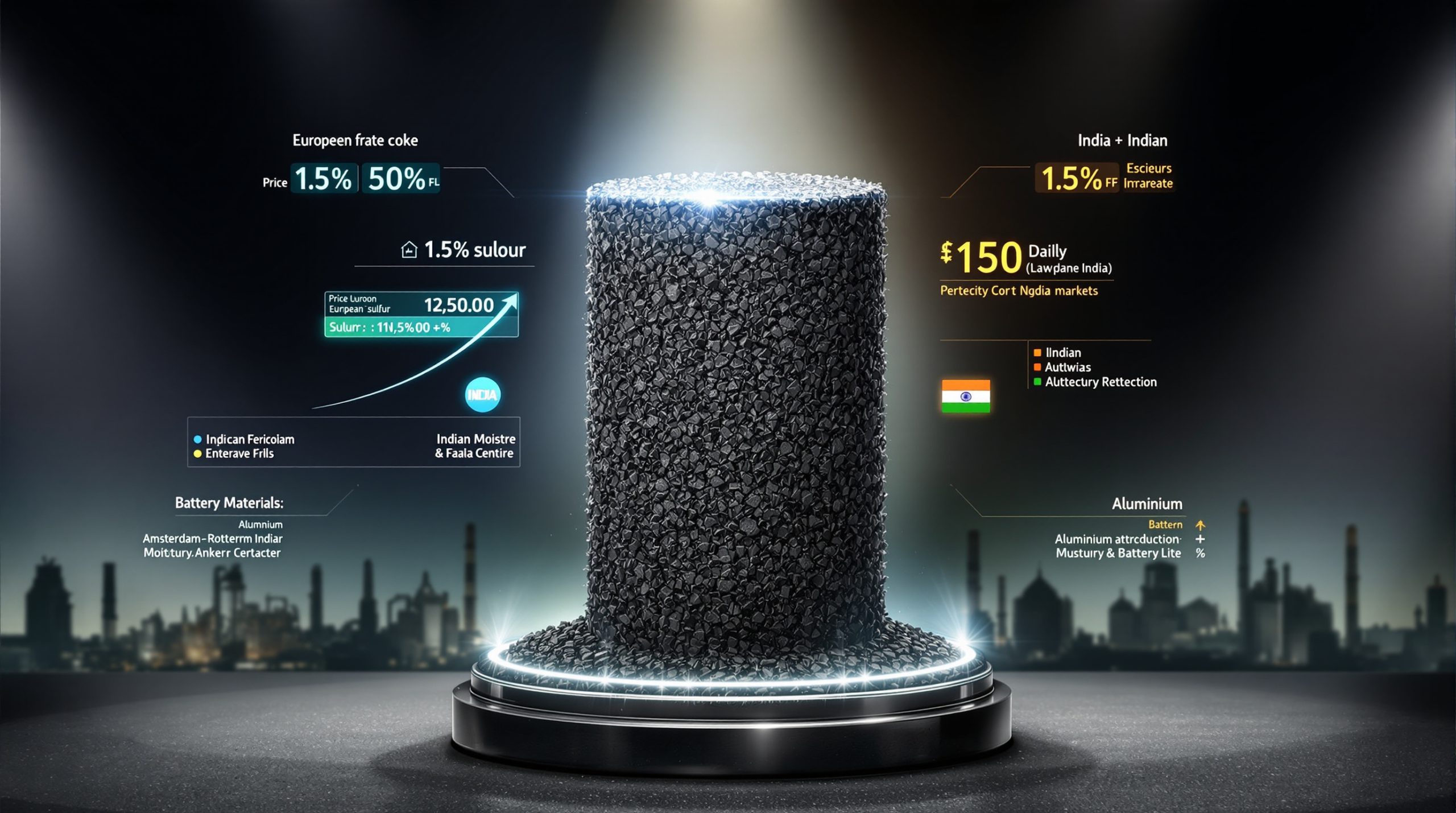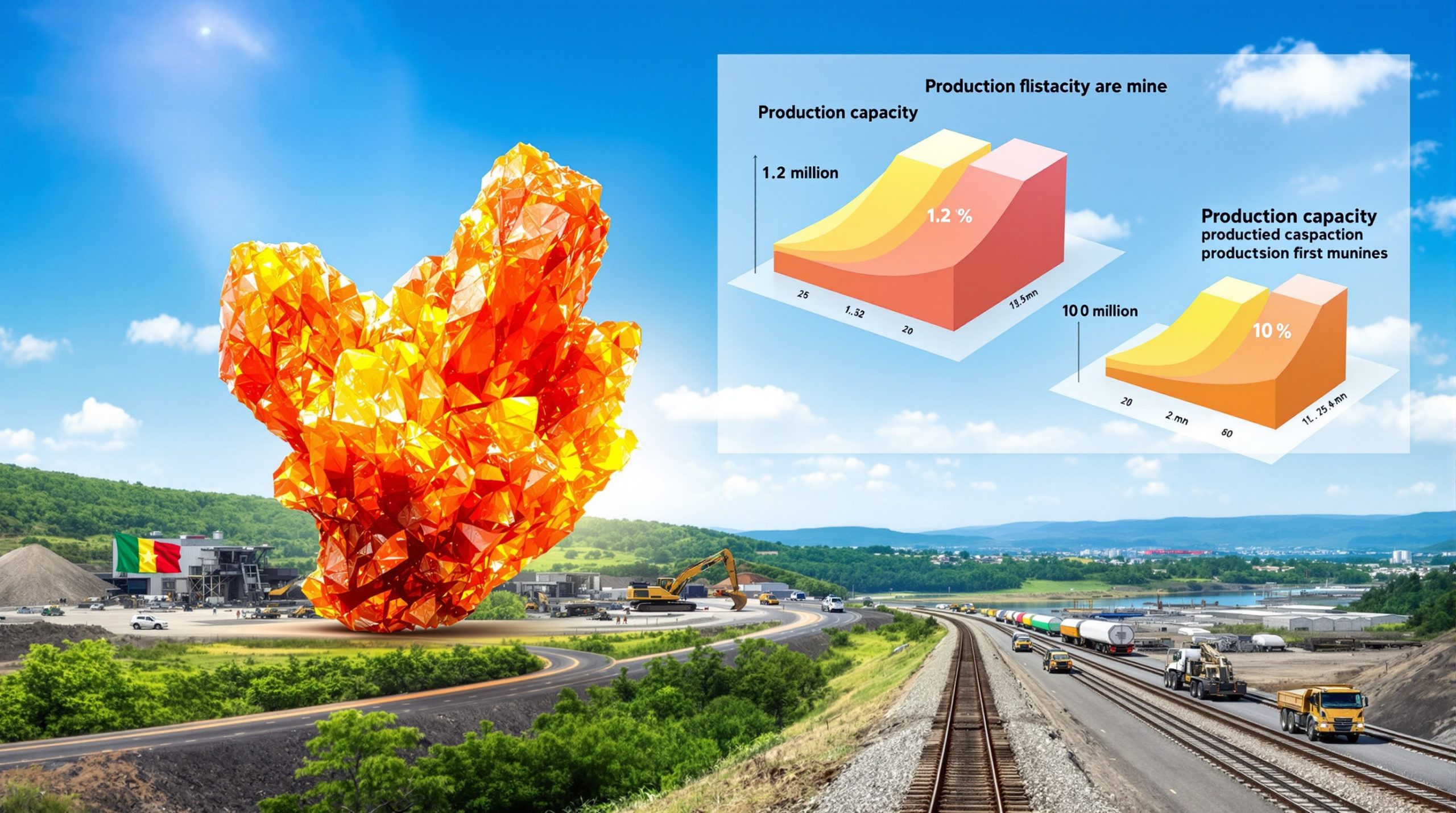What's Happening with Lead Concentrate Imports in May 2025?
According to the latest customs data released by Shanghai Metal Market (SMM), lead concentrate imports in May 2025 reached 104,000 metric tons, marking a 6.4% decrease month-over-month but a 3.8% increase year-over-year. Despite this monthly decline, the year-to-date import volume stands at an impressive 552,676 metric tons, representing a substantial 64% growth compared to the same period in 2024.
The current import market conditions remain challenging, with SMM reporting that "lead concentrate imports in May remained in a state of minor losses, with the import window yet to open." This situation indicates that despite the strong year-over-year growth in volume, profitability remains elusive for importers.
Import activities are primarily sustained through:
- Pre-established trade market transactions
- Long-term orders from smelters that continue to arrive at ports despite unfavorable economics
May 2025 Import Statistics
The key metrics for May 2025 lead concentrate imports include:
| Metric | Value | Change |
|---|---|---|
| May 2025 Import Volume | 104,000 metric tons | -6.4% MoM, +3.8% YoY |
| Jan-May 2025 Total | 552,676 metric tons | +64% YoY |
| Import Profit Status | Negative margins | Import window closed |
These figures highlight a market that's experiencing significant year-over-year growth despite short-term monthly volatility and challenging profitability conditions.
Import Market Conditions
The import market faces a complex situation where volume growth doesn't necessarily translate to profitability. SMM notes that importers continue to operate despite "minor losses," suggesting that strategic considerations beyond immediate profit are driving import decisions.
"Lead concentrate imports in May remained in a state of minor losses, with the import window yet to open." – SMM Market Report, June 24, 2025
This suggests that importers may be positioning themselves for anticipated future improvements in market conditions or fulfilling contractual obligations despite unfavorable economics.
Why Are Lead Concentrate Imports Declining?
The month-over-month decline in lead concentrate imports can be attributed to several interconnected factors affecting both global supply and market pricing dynamics.
Supply Constraints
Australia, a key supplier of lead concentrates to the global market, experienced a notable decline in production during Q1 2025. SMM reports that "in Q1, the supply of lead concentrates from regions such as Australia declined," contributing to tighter global availability.
This supply situation is further complicated by:
- Lower-than-expected imported ore volumes reaching markets
- A growing scarcity of high-grade ore, which is particularly valued by smelters
- Rising concerns about US tariffs impact following the implementation of tariff increases scheduled for Q3 2025
The combined effect of these factors has created significant supply-side pressure, limiting import volumes despite strong year-to-date growth figures.
Market Pricing Factors
Treatment charges (TCs) for lead concentrates have been on a declining trajectory, reflecting the tightening supply-demand balance. Current TC quotes for lead concentrates (specifically pb50TC with silver content ranging from 1.5-2 kg/mt) are quoted between 0-200 yuan/mt (metal content).
Additionally, importers and smelters must account for:
- Silver refining fees that vary based on silver content
- Coefficient pricing adjustments that reflect current market conditions
- Additional processing costs for lower-grade materials
The compression in treatment charges directly impacts import profitability, contributing to the "minor losses" reported by SMM and explaining the month-over-month import volume decline.
How Are Silver Prices Impacting the Lead Concentrate Market?
Silver's role as a valuable by-product in lead concentrate processing has become increasingly significant in 2025, creating complex dynamics in the lead concentrate market.
Silver Price Dynamics
According to SMM, "silver prices continued to reach new highs in 2025, expanding the domestic and international arbitrage space." This price rally has created new opportunities for smelters with silver recovery capabilities.
The silver market squeeze has generated:
- Widening domestic and international price spreads
- Enhanced arbitrage opportunities for traders and smelters
- Improved economics for concentrates with higher silver content
These dynamics have partially offset the challenges in the lead concentrate market, providing an important revenue stream for market participants.
Smelter Behavior
The elevated silver prices have significantly influenced smelter operational decisions. SMM reports that high silver prices are "encouraging smelters to actively operate to achieve higher by-product revenues and export profits."
This has resulted in:
- Smelters maintaining operations despite tightening concentrate supply
- Increased competition for silver-rich lead concentrates
- Strategic focus on maximizing silver recovery and refining
- Active pursuit of export opportunities to capitalize on international price premiums
Essentially, silver has become a crucial profitability driver that is keeping smelters in operation despite challenges in the core lead concentrate market.
"Silver prices continued to reach new highs in 2025, expanding the domestic and international arbitrage space and encouraging smelters to actively operate." – SMM Market Report, June 24, 2025
What's the Current State of the Lead Concentrate Market?
The lead concentrate market in mid-2025 is characterized by relative stability in domestic supply but ongoing price pressures and tightening market conditions.
Domestic Supply Conditions
SMM reports that "domestic lead concentrate supply remained relatively stable." However, this stability masks underlying tensions in the market, with several factors creating a delicate balance:
- Domestic production has maintained consistent output levels
- The market is operating in what SMM describes as a "state of tight balance"
- Supply-demand equilibrium remains precarious due to import constraints
- High-grade ore scarcity continues to affect overall market dynamics
This situation suggests that while catastrophic supply shortages haven't materialized, the market lacks the buffer needed to absorb additional demand shocks.
Treatment Charge Trends
Treatment charges (TCs) for lead concentrates experienced another downward adjustment in June 2025, continuing a trend of declining processing fees. According to SMM, "lead concentrate TCs fell again in June," primarily due to:
- Scarcity of high-grade ore putting smelters in a weaker negotiating position
- Lower-than-expected imported ore volumes creating competition among buyers
- Silver's strength encouraging smelters to maintain operations despite TC compression
Current quotes for lead concentrates (pb50TC with 1.5-2 kg/mt silver content) range from 0-200 yuan/mt (metal content), with additional fees for silver refining or coefficient pricing adjustments.
The market consensus indicates that downward pressure on TCs is likely to continue, with prices more likely to fall than rise in the near term.
What's the Outlook for Lead Concentrate Markets in H2 2025?
Looking forward to the second half of 2025, market analysts at SMM present a cautious view of the lead concentrate market, with several challenges on the horizon.
Import Forecast
The outlook for lead concentrate imports in H2 2025 remains pessimistic, according to SMM market analysis. Key factors influencing this negative outlook include:
- Persistent supply constraints from major producing regions
- Ongoing concerns about US Red Dog concentrate availability following Q3 tariff implementation
- Continued negative import profit margins deterring speculative imports
- High-grade ore scarcity limiting quality-driven import incentives
These factors suggest that the strong year-to-date growth in import volumes may be difficult to maintain through the second half of the year.
Domestic Market Expectations
The domestic lead concentrate market is expected to continue operating in a state of tight balance through H2 2025. SMM projects that:
- Domestic supply will remain relatively stable but constrained
- The ongoing scarcity of high-grade ore will continue to affect market dynamics
- Treatment charges will face continued downward pressure
- Silver prices will remain a crucial factor in overall market economics
This combination of factors suggests that market participants should prepare for continued tight conditions and potential further TC compression in the coming months.
"Looking ahead to H2 2025, the outlook for lead concentrate imports remains pessimistic, and domestic lead concentrate supply is likely to continue in a state of tight balance." – SMM Market Report, June 24, 2025
FAQ About Lead Concentrate Market
What factors are influencing lead concentrate treatment charges?
Treatment charges for lead concentrates are being influenced by multiple factors including reduced supply from key regions like Australia, concerns about US Red Dog concentrate prices following tariff increases, and the scarcity of high-grade ore. These supply constraints, combined with active smelter operations pursuing silver by-product revenues, are creating downward pressure on TCs.
The current range of 0-200 yuan/mt (metal content) for pb50TC with 1.5-2 kg/mt silver reflects these market tensions, with additional costs for silver refining or coefficient pricing further affecting the overall economics for processors.
How significant is the year-over-year increase in lead concentrate imports?
The 64% year-over-year increase in lead concentrate imports (reaching 552,676 metric tons in 2025) represents a substantial growth rate that indicates strong underlying demand despite challenging market conditions. However, this figure should be considered alongside the recent monthly decline of 6.4% and the continued negative import profit margins.
This suggests that while annual growth remains impressive, the market may be approaching an inflection point where profitability concerns begin to constrain further volume growth. The continuation of "minor losses" on imports, as reported by SMM, indicates that this growth may not be economically sustainable without market adjustments.
What role does silver content play in lead concentrate pricing?
Silver content has become increasingly critical in lead concentrate pricing and profitability calculations, particularly with silver prices reaching new highs in 2025. The typical silver content in the reference pb50TC concentrates (1.5-2 kg/mt) represents a significant value component that directly impacts:
- Overall concentrate valuation and pricing
- Smelter profitability and operational decisions
- Treatment charge negotiations and discounts
- Processing route selection and optimization
With silver prices at record levels, the metal has transformed from a secondary consideration to a primary driver of market dynamics, encouraging smelters to maintain operations despite challenging lead concentrate market conditions and enabling them to accept lower treatment charges than would otherwise be economically viable.
Lead Concentrate Market Data Tables
Monthly Import Trends (2025)
| Month | Import Volume (mt) | MoM Change | YoY Change |
|---|---|---|---|
| May | 104,000 | -6.4% | +3.8% |
| Jan-May (Total) | 552,676 | – | +64% |
Current Lead Concentrate Pricing Parameters
| Parameter | Value/Range |
|---|---|
| Lead Concentrate Type | pb50TC with 1.5-2 kg/mt silver |
| Treatment Charge | 0-200 yuan/mt (metal content) |
| Additional Costs | Silver refining fees or coefficient pricing |
| Import Profit Status | Minor losses (import window closed) |
Market Insight: Despite the substantial 64% year-over-year increase in lead concentrate imports, the month-over-month decline of 6.4% in May 2025 signals potential challenges ahead. With silver prices at record highs and supply constraints from major producing regions, treatment charges are facing continued downward pressure, creating a market environment where TCs are more likely to fall than rise in the coming months.
Market Implications and Strategies
The current lead concentrate market conditions suggest several strategic considerations for different market participants:
For Smelters
Smelters facing tightening concentrate supply and declining TCs may consider:
- Prioritizing processing of higher silver content concentrates to maximize by-product revenue
- Securing long-term supply agreements to reduce procurement volatility
- Optimizing silver recovery processes to capitalize on high silver prices
- Exploring export opportunities to benefit from international price arbitrage
For Miners and Concentrate Producers
Producers of lead concentrates could benefit from:
- Highlighting silver content in marketing and pricing negotiations
- Focusing development on higher-grade ore bodies when feasible
- Evaluating direct sales to smelters versus trader intermediaries
- Considering hedging strategies for both lead and silver components
Additionally, keeping up with mineral exploration insights could help producers identify new opportunities in this changing market.
For Traders and Importers
With import windows closed and profits challenging, traders might consider:
- Focusing on quality differentials and silver content premium opportunities
- Developing strategic inventory positions ahead of potential further supply tightening
- Exploring new sourcing regions less affected by current constraints
- Building stronger relationships with both suppliers and smelters to navigate the tight market
Technical Considerations in Lead Concentrate Processing
The current market dynamics highlight several technical aspects of lead concentrate processing that impact economics:
Silver Recovery Efficiency
With silver prices at record highs, recovery efficiency has become increasingly important. Modern processing techniques can achieve silver recoveries of 85-95%, with each percentage point improvement representing significant value in the current price environment.
Understanding the gold-silver ratio analysis can provide valuable insights for processors optimizing their recovery operations.
Concentrate Grade Considerations
The pb50TC specification (approximately 50% lead content) represents a standard benchmark, but variations in:
- Lead content (ranging from 45-65% in commercial concentrates)
- Silver content (typically 1-5 kg/mt, with the reference range being 1.5-2 kg/mt)
- Impurity levels (particularly penalty elements like arsenic, antimony, and mercury)
All significantly impact valuation and processing economics, explaining the market's emphasis on "high-grade ore" availability.
Processing Route Optimization
Smelters with flexible processing capabilities can optimize their input mix based on:
- Lead-to-silver ratios in available concentrates
- Current TC levels and metal price relationships
- Penalty element management capabilities
- Export market opportunities for refined products
This technical flexibility represents a competitive advantage in the current tight market conditions, with some operations exploring advanced mineral beneficiation trends to enhance their processing capabilities.
Looking for the Next Major Mineral Discovery?
Discovery Alert's proprietary Discovery IQ model instantly notifies investors of significant ASX mineral discoveries, transforming complex data into actionable insights for both short-term traders and long-term investors. Understand why historic discoveries can generate substantial returns by visiting Discovery Alert's dedicated discoveries page and begin your 30-day free trial today to position yourself ahead of the market.




